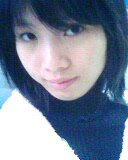
 ue scenery and rich cultural resources. It was approved as a national-level scenic area and a national forest park by the State Council. With its graceful peaks, caves, waterfalls, and springs, this mountain in southeast Nanhai County sixty-eight kilometers from Guangzhou is one of the four famous mountains in Guangdong Province. Many rocks on the mountain are inscribed with poems and essays by scholars of various dynasties who were attracted to the place for its scenery. White Cloud Cave (Baiyundong) is said to be where the Ming scholar He Baiyun
ue scenery and rich cultural resources. It was approved as a national-level scenic area and a national forest park by the State Council. With its graceful peaks, caves, waterfalls, and springs, this mountain in southeast Nanhai County sixty-eight kilometers from Guangzhou is one of the four famous mountains in Guangdong Province. Many rocks on the mountain are inscribed with poems and essays by scholars of various dynasties who were attracted to the place for its scenery. White Cloud Cave (Baiyundong) is said to be where the Ming scholar He Baiyun once studied. On this scenic mountain which has attracted visitors ever since the Ming Dynasty, a nearby waterfall called Feiliuqianchi ("water flies a thousand feet" is a spectacular sight. Visitors will find a stay at the mountain hotels set among green trees pleasant.)
once studied. On this scenic mountain which has attracted visitors ever since the Ming Dynasty, a nearby waterfall called Feiliuqianchi ("water flies a thousand feet" is a spectacular sight. Visitors will find a stay at the mountain hotels set among green trees pleasant.)Xiqiao Mountain is located in Nanhai District, Foshan City, in southern Guangdong Province. It has an average altitude of about 300 meters (984 feet). The main peak is only about 340 meters (1,115 feet) high. T
 he mountain is an ancient extinct volcano, but it has created amazing masterpieces: numerous grotesque cliffs, strange hollows, limpid lakes and spectacular waterfalls cover the whole mountain. Xiqiao Mountain is renowned as an emerald in South Guangdong. It has 72 peaks and 36 hollows. The peaks are grotesque, and the hollows are deep and serene. The major scenic spots include White Cloud Hollow Scenic Spot, Jasper Hollow Scenic Spot, Green Rock Scenic Spot, Kwan-yin of South China Sea Cultural Garden, Yellow Immortal Holy Garden and Wushu Hall of Huang Feihong's Lion Skill.
he mountain is an ancient extinct volcano, but it has created amazing masterpieces: numerous grotesque cliffs, strange hollows, limpid lakes and spectacular waterfalls cover the whole mountain. Xiqiao Mountain is renowned as an emerald in South Guangdong. It has 72 peaks and 36 hollows. The peaks are grotesque, and the hollows are deep and serene. The major scenic spots include White Cloud Hollow Scenic Spot, Jasper Hollow Scenic Spot, Green Rock Scenic Spot, Kwan-yin of South China Sea Cultural Garden, Yellow Immortal Holy Garden and Wushu Hall of Huang Feihong's Lion Skill.The White Cloud Hollow is the most renowned among the 36 hollows of Xiqiao Mountain. This scenic spot, si
 tuated in the western foothills of Xiqiao Mountain, takes up an area of 1.2 sq kilometers (297 acreages). In the hollow, there are numerous temples, monasteries and pavilions. The Cloud Waterfall pours into a brook, which flows outward into three lakes. The waterfall and the lakes illuminate each other. The White Cloud Hollow abounds with cultural relics and historic sites of the Ming (1368-1644) and Qing (1644-1911) Dynasties such as Three Lakes Academy, Cloud and Spring Hall, White Cloud Ancient Temple and Inscriptions on Cliffs. Additionally, the Cloud and Waterfall of Xiqiao has been listed as one of 'the eight spectacular scenes of Guanzhou' in the Qing Dynasty. At night the scene at White Cloud Hollow is fantastic. The night scene illuminated with resplendent colored-lights adds a splendor to the charm of this scenic spot.
tuated in the western foothills of Xiqiao Mountain, takes up an area of 1.2 sq kilometers (297 acreages). In the hollow, there are numerous temples, monasteries and pavilions. The Cloud Waterfall pours into a brook, which flows outward into three lakes. The waterfall and the lakes illuminate each other. The White Cloud Hollow abounds with cultural relics and historic sites of the Ming (1368-1644) and Qing (1644-1911) Dynasties such as Three Lakes Academy, Cloud and Spring Hall, White Cloud Ancient Temple and Inscriptions on Cliffs. Additionally, the Cloud and Waterfall of Xiqiao has been listed as one of 'the eight spectacular scenes of Guanzhou' in the Qing Dynasty. At night the scene at White Cloud Hollow is fantastic. The night scene illuminated with resplendent colored-lights adds a splendor to the charm of this scenic spot.Kwan-yin of South China Sea Cultural Garden is situated at Daxian Peak, one of the 72 peaks of Xiqiao Mountain. The holy statue of Kwan-yin is grand and gorgeous. The statue is about 61.9 meters (about 203 feet) high, implying that Kwan-yin achieved perfection on June 19th. Kwan-yin sits in her holy seat of lotus flowers, with a merciful light shining in her eyes. To the left of Daxian Peak, an architectural complex of Kwan-yin culture is established, where various statues of Kwan-yin are exhibited.
Jasper Hollow is situated in a canyon stretching from east to west in the northwestern part of Xiqiao Mountain. The waterfall inside the hollow is the largest waterfall in the mountain. Green Rock Scenic Spot lies in the midst of the mountain. Dragon Beard Spring and Half-moon Spring are also worth visiting.
Tips: The Best time to visit Xiqiao Mountain is during Spring Festival, when peach trees blossom vigorously and their fragrance spreads over the whole mountain.
Opening Hours:
07:30-18:00






















